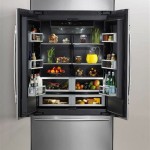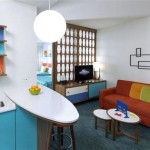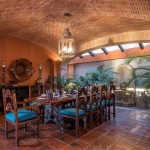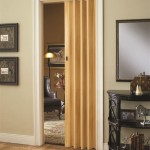Batten Board Interior Walls: A Comprehensive Guide
Batten board interior walls have experienced a resurgence in popularity, offering a versatile and aesthetically pleasing alternative to traditional drywall or painted surfaces. This design element involves attaching narrow strips of wood, known as battens, to a wall to create a textured, patterned, or paneled effect. The implementation of batten board designs allows for a wide range of stylistic expressions, from rustic and farmhouse aesthetics to modern and minimalist interiors. This article provides a comprehensive overview of batten board interior walls, covering their types, installation process, design considerations, advantages, and maintenance.
Types of Batten Board Designs
The versatility of batten board walls stems from the diverse arrangement patterns and materials that can be utilized. Understanding the different types of designs is crucial in selecting the appropriate style for a specific interior space.
Vertical Batten Walls: This is perhaps the most common and straightforward batten board design. Vertical battens are installed parallel to each other, creating a sense of height and elongation in a room. This pattern is particularly effective in spaces with low ceilings, as it visually draws the eye upward.
Horizontal Batten Walls: Conversely, horizontal battens emphasize the width of a room. This design can make a narrow space feel wider and more open. The spacing between the battens can be varied to achieve different effects, with wider spacing creating a more minimalist look and narrower spacing offering a more textured and detailed appearance.
Grid Pattern Batten Walls: A grid pattern involves both vertical and horizontal battens, creating a series of squares or rectangles on the wall. This design adds a geometric element to the space and is well-suited for creating a visually dynamic feature wall. The dimensions of the grid can be customized to fit the overall design scheme.
Herringbone or Chevron Batten Walls: These patterns involve arranging battens in a V-shaped or zig-zag pattern. The herringbone design typically features battens meeting at a 90-degree angle, while the chevron pattern involves a continuous zig-zag. These patterns are more complex to install but offer a striking and sophisticated aesthetic.
Geometric Batten Walls: Beyond the standard grid, designers can create more abstract and complex geometric patterns using battens. This approach allows for a high degree of customization and can be used to create unique and artistic wall features. Careful planning and precise measurements are essential for achieving a successful geometric design.
Picture Frame Batten Walls: This design involves creating a series of rectangular or square "frames" on the wall using battens. This pattern adds a classic and elegant touch to the space. The size and spacing of the frames can be adjusted to suit the specific dimensions of the wall and the overall aesthetic.
Board and Batten Walls: While technically a distinct style, it's often grouped under the batten board umbrella. In board and batten, wider "boards" are applied to the wall first, and then thinner battens are used to cover the seams where the boards meet. This creates a more traditional and rustic look.
The selection of the appropriate batten board design depends on factors such as the size and shape of the room, the desired aesthetic, and the existing architectural style. Careful consideration should be given to how the chosen pattern will interact with other design elements in the space, such as furniture, lighting, and artwork.
Installation Process
The installation of batten board walls, while accessible to many DIY enthusiasts, requires careful planning, precise measurements, and attention to detail. A thorough understanding of the process is crucial for achieving a professional and visually appealing result.
Planning and Preparation: The initial step involves planning the design, determining the batten spacing, and calculating the amount of material required. A detailed sketch or blueprint of the wall with precise measurements is essential. This plan should include the dimensions of the battens, the spacing between them, and the overall layout of the pattern. Next, gather the necessary tools and materials, including battens, construction adhesive, a nail gun or hammer, a level, a measuring tape, a saw (miter saw recommended for angled cuts), sandpaper, primer, paint, and caulk.
Surface Preparation: Ensure the wall surface is clean, smooth, and free of any imperfections. Repair any holes or cracks with spackle and sand the wall smooth. Apply a coat of primer to the wall to improve paint adhesion and prevent the wood from absorbing moisture.
Batten Cutting and Sanding: Cut the battens to the desired length using a saw. A miter saw is recommended for making precise angled cuts, especially for herringbone or chevron patterns. Sand the edges of the battens to remove any splinters and ensure a smooth finish. This step is crucial for achieving a professional-looking result.
Batten Attachment: Begin by applying construction adhesive to the back of each batten. Position the batten on the wall according to the planned layout and secure it with a nail gun or hammer and nails. Use a level to ensure the battens are straight and plumb, especially for vertical and horizontal patterns. For complex patterns, consider using a temporary jig or template to ensure accurate placement.
Caulking and Filling: Once all the battens are attached, caulk the seams where the battens meet the wall and fill any nail holes with wood filler. This step is essential for creating a seamless and professional finish. Allow the caulk and wood filler to dry completely before proceeding to the next step.
Priming and Painting: Apply a coat of primer to the battens to create a uniform surface for painting. Once the primer is dry, apply two coats of paint in the desired color, allowing each coat to dry completely before applying the next. Consider using a paint sprayer for a smooth and even finish, especially for large wall surfaces.
Finishing Touches: After the paint has dried completely, inspect the wall for any imperfections and make any necessary touch-ups. Consider adding decorative elements, such as trim or molding, to further enhance the design. Clean the area and enjoy the newly transformed space.
Proper planning and execution are crucial for a successful batten board wall installation. If unsure about any aspect of the process, it is recommended to consult with a professional contractor.
Design Considerations and Advantages
Beyond the aesthetic appeal, batten board walls offer several advantages and design considerations that contribute to their growing popularity. Understanding these aspects can help inform the decision to incorporate batten board into an interior space.
Aesthetic Enhancement: Batten board walls add texture, dimension, and visual interest to a room. They can be used to create a focal point, highlight architectural features, or add a touch of elegance to a modern space. The versatility of batten board designs allows for a wide range of stylistic expressions, from rustic and farmhouse aesthetics to contemporary and minimalist interiors.
Concealing Imperfections: Batten board can effectively conceal imperfections in the wall surface, such as cracks, dents, or unevenness. This is a particularly useful application in older homes with imperfect walls. The battens create a uniform surface that hides any underlying blemishes, resulting in a cleaner and more polished look.
Acoustic Benefits: While not a primary soundproofing solution, batten board walls can contribute to improved acoustics in a room. The textured surface of the battens helps to diffuse sound waves, reducing echo and reverberation. This can be particularly beneficial in larger spaces or rooms with hard surfaces.
Customization Options: Batten board walls offer a high degree of customization in terms of design, color, and material. The spacing, width, and orientation of the battens can be adjusted to achieve different effects. The battens can be painted in any color to match the existing décor or create a contrasting focal point. Different types of wood, such as pine, oak, or MDF, can be used to achieve different aesthetic and budget considerations.
Cost-Effectiveness: Compared to some other wall treatments, such as wallpaper or tile, batten board can be a relatively cost-effective option. The materials required are typically readily available and affordable, and the installation process, while requiring some skill, can often be done as a DIY project. This makes batten board an attractive option for homeowners looking to upgrade their interiors on a budget.
Increased Home Value: A well-designed and professionally installed batten board wall can increase the value of a home. This design element adds character and sophistication to a space, making it more appealing to potential buyers. The perceived value of the home can be enhanced by the addition of unique and stylish features such as batten board walls.
Careful consideration should be given to the existing architectural style of the home, the desired aesthetic, and the overall budget when incorporating batten board walls into an interior space. Consulting with a design professional can help ensure a cohesive and visually appealing result.
Batten board walls stand as a testament to the evolving landscape of interior design, offering a compelling blend of aesthetic versatility, practical benefits, and customization options. Their resurgence in popularity reflects a growing appreciation for textured surfaces, geometric patterns, and opportunities for personalization in creating unique and inviting living spaces.

Board And Batten Tutorial Love Grows Wild

How To Install An Interior Board And Batten Wall

Easy Diy Board And Batten Wall Angela Marie Made

Everything You Need To Know About Diy Board And Batten Walls Small Stuff Counts

50 Beautiful Board And Batten Wall Ideas Nikki S Plate Home Remodeling Dream House

Board And Batten Wainscoting Full Tutorial Rogue Engineer

Stunning Diy Board And Batten Wall Ideas

Board And Batten Home With Stefani

How To Build A Modern Board And Batten Accent Wall Delineate Your Dwelling

Board And Batten Home With Stefani








